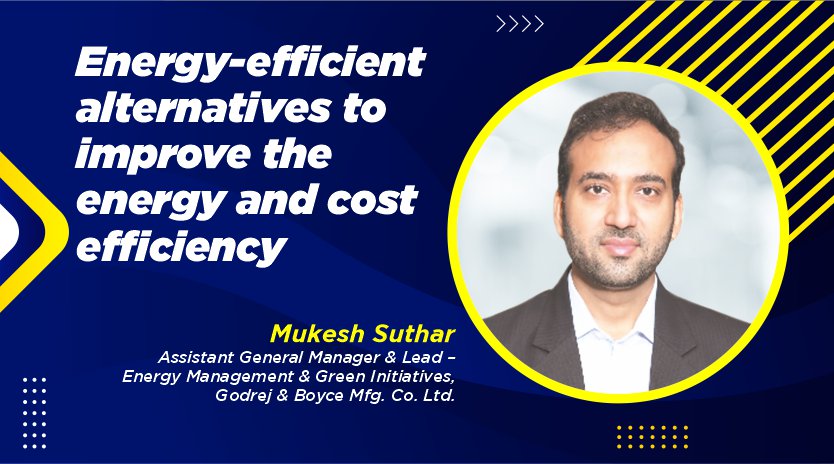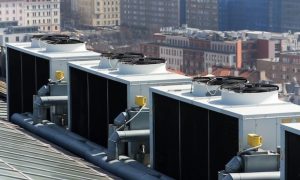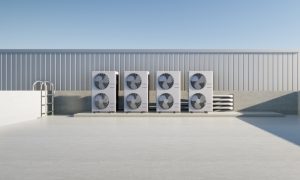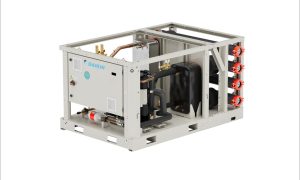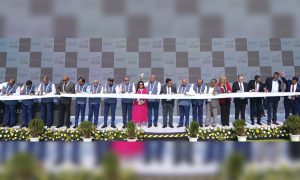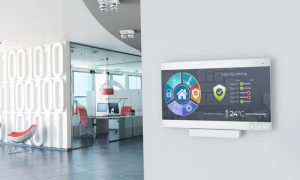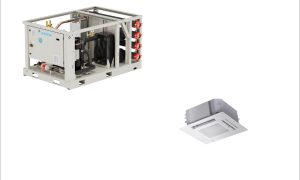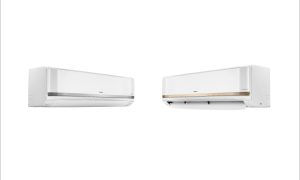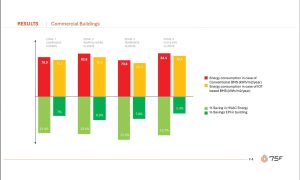More efficient use of energy at all stages of the supply/demand chain could reduce the negative impacts of energy consumption while still allowing equivalent economic development.
Energy consumption is an essential entity for development.
While increased energy use has many benefits, we are also becoming increasingly aware of its negative impacts. We experience these negative impacts globally and locally in the form of climate change. (The effects of climate change are visible globally, and the only way to tackle the same is when the industries across the globe act individually to shift their operations from lean to green). Degradation of the local environment, e.g. poor air quality, degradation of soils (leading to desertification in extreme cases), resource depletion (e.g. water) and noise pollution.However, more efficient use of energy at all stages of the supply/ demand chain could reduce the negative impacts of energy consumption while still allowing equivalent economic development. Furthermore, the inefficient use of energy generally implies higher than necessary operating costs to the energy end-user.
Energy efficiency means using lower energy to accomplish a similar or better outcome, and it can generally be divided into two categories:
- Using technology to reduce energy usage (such as installing energy-efficient lighting or equipment) or
- Making behavioural adjustments at institutions (that is, turning off the lights when someone leaves a space or welcoming natural sunlight during daytime).
Energy Efficiency is the 1st step toward a sustainable environment & Net Zero targets to tackle climate change. It is also essential to developing a cleaner energy grid and has many benefits for individuals and society.
Clean energy transition means shifting energy production from sources that release many greenhouse gases, such as fossil fuels, to those that release low Greenhouse Gases. Increased efficiency can lower greenhouse gas (GHG) emissions and other pollutants and decrease water use in the HVAC system.
Energy-efficient technologies for smart and integrated HVAC systems
Currently, HVAC systems contribute to 40-50 per cent of the overall energy consumption in commercial spaces & with an increased focus on climate change driven by the United Nation’s Sustainable Development Goals (SDGs). The HVAC industry is witnessing a paradigm shift toward energy-efficient alternatives to improve traditional systems’ energy and cost efficiency. A thorough evaluation of technologies and benchmarking can aid in improving the building’s EPI (Energy Performance Index). We at G&B are the signatory to the Global Energy Efficiency movement, i.e. EP100, wherein we’ve committed to improving energy productivity by 100 per cent on or before 2030. Also, the Life Cycle Assessment is an effective tool to evaluate the cost of ownership and the environmental impacts of the available technology we follow.Additionally, the inclusion of the Shadow Carbon Pricing scale helps in the identification & implementation of potential opportunities to improve energy efficiency.
Further, we are certified with the Energy Management System (ISO 50001:2018), which is a unified & structured framework for tangible energy performance indicators. It aids in measuring the current levels of energy, periodically monitoring & reviewing the same, and taking necessary actions to improve the energy levels further. It is a unified framework set globally.
Hence, implementing EnMS is the first key milestone to improving the current performance, for which we had also chosen to set an external energy efficiency target. Regarding digitization-enabled energy improvement, occupant specific and highly responsive systems are the norms instead of zone ased solutions. These multi-equipped systems need proper commissioning with ‘Controls’ to operate in Tandem for best efficiency performance.The context mentioned above encapsulates the evaluation of energy efficient technologies w.r.t. the smart & integrated HVAC systems.
Opportunities for improving HVAC equipment efficiency
Monitoring & properly maintaining the energy performance of the HVAC system need to go hand-in-hand with attaining thermal comfort with the help of HVAC systems. Some of the potential opportunities available for improving the HVAC equipment efficiency are outlined below:
- Maintain Proper System Boundaries – Overseeing system boundaries by controlling heating and cooling to designated spaces can improve HVAC energy efficiency by as much as 20 per cent. An energy conservation audit for energy conservation in new buildings requires that system boundaries be clearly defined to know what those settings should be, when, where the boundaries lie, and how airflow from HVAC ducting should be directed.
- Use Automatic Controls Where Possible – Automatically controlling the speed, output, and run-time of HVAC equipment such as fans, chillers, and compressor motors allow the entire system to be maintained to provide appropriate heating and cooling.
- Maintain Equipment Set Points – Ensure that equipment set points are reasonable to achieve desired comfort levels and that they aren’t working more than necessary. Equipment such as fans and blowers should be set to run at speeds that deliver the required air demanded by the space boundaries they cater to.
- Maintain Daily, Seasonal Thermostat Set Points – A programmable thermostat positioned to regulate air current and temperature to provide reasonable comfort levels at various times of the day and year creates an economical heating and cooling operation. • Properly Specify and Size Your System -Achieving facility climate conditions while conserving energy relies on an appropriate HVAC compressor and chiller size. Giant apparatus in small areas will run at optimal speeds and consume large power volumes. When placed under strain for larger sizes, a small unit affects comfort – the sizing of the equipment is improper. • Schedule and Maintain Equipment Properly – Ensure that HVAC systems and components are on a disciplined, time-based maintenance schedule and that the data is recorded promptly.
Emerging trends toward energy efficiency solutions
With the increased focus shifting around technology, the HVAC industry is undergoing a massive and steady transformation because Air conditioning systems are energy-intensive equipment and contribute to around 40-50 per cent of the average building electricity load. It is imperative to look at how these systems are operated & maintained. Energy efficiency is perhaps the main objective. Patterns are arising where, like never before, lowering energy bills and carbon emissions is at the focal point of a higher degree of advancement. Electrification and decarbonization are starting to lead the trends in the HVAC sector.
Today, pioneers can likewise utilize innovation, which assumes a significant part in keeping HVAC energy efficiency on a forward path. There are three main ways to lower heating, cooling, and ventilation costs. When they are covered, the energy expenses of a building can be reduced significantly:
- Reducing the need for heating and cooling with adequate insulation and airtight construction.
- Purchasing air conditioners, space heaters, and air handlers with a high nameplate efficiency. Many advancements are there in the market for the HVAC equipment viz magnetic air bearing chillers, VFD Screw Chillers with Green Refrigerants like R1234ze, IE5 pumps for chilled & condenser water, Next-gen smart cooling Towers, and Integrated AHUs with EC fans.
- Apart from design configuration, we must ensure the thermostat is set correctly. Even the most efficient HVAC system will waste energy when the temperature is set too low or too high.
Thermostat settings are more subjective since occupants have different preferences. However, smart thermostats can be an excellent addition to office spaces. These thermostats can learn preferences and usage habits, saving money. The temperature is set back automatically when occupants are away and returned to the preferred level before they arrive. Therefore, high-efficiency HVAC equipment is initially more expensive but cheaper in the long run as the extra cost is recovered multi-fold in energy savings.
Measures to accelerate energy efficiency investment that leads to cost saving
According to the Energy Efficiency Investment Survey 2022 commissioned by ABB, 32% of the companies plan to make energy efficiency improvements this year, and 7 in 10 companies are upgrading their equipment to best-in-class energy efficiency ratings.
As per the report, globally, an institution’s 23 per cent of annual operating costs are attributable to energy usage. They spend nearly 27 per cent of their operating budget on energy, which shows that institutions are turning their energy consumption tale more efficiently. The following measures can be suggested to accelerate the energy efficiency viz:
- Ensuring thorough maintenance of the utility equipment as compressed air, HVAC is the prime consumer of the energy consumption of the buildings and industry.
- Equal focus on energy consumption compared to O&M.
- Automation & Smart solutions as Smart buildings play a central element and pave the way for integrating digitalization and relevant technologies in the HVAC industry. This is expected to redefine the next generation of HVAC systems and augment its existing applications. Innovative HVAC solutions will substantially improve energy efficiency while providing cost savings to the enduser.
- Investing in projects that vest in high returns with lower costs • Retrofit / revamping of existing systems to benchmark to latest advancements in technologies
These are some measures that could be implemented to ensure that we attain energy efficiency with costs being saved in turn.
Government initiatives for investments propagate energy-efficient technologies.
India’s smart cities have provided additional impetus to the HVAC industry to provide sustainable and affordable solutions. With the infrastructure growth in the country at a rapid pace along with urbanization, people are now turning to smart homes – smart TVs, smart appliances, smart ACs, washing machines, etc.
Smart buildings are expected to be the norm; automated processes will be imminent. This will minimize human intervention to operate HVAC systems and monitor remote operations. An automated HVAC system can dynamically respond to requirements and adjust temperatures. It also provides significant cost savings throughout its lifecycle. Such innovative solutions will be critical attractions of buildings in the next few years for the movement of energy-efficient technologies.
Further, the Government of India has undertaken a two-pronged approach to cater to the energy demand of its citizens while ensuring minimum growth in CO2 emissions so that global emissions do not lead to irreversible damage to the earth system.
A Lot of schemes & awards are also announced by govt to promote energy conservation and energy efficiency, viz
- Standards and Labelling
- Energy Conservation Building Codes (ECBC)
- Demand Side Management (DSM) Scheme for sectors & MSMEs
- Energy Efficiency Financing Platform (EEFP)
- National Energy Conservation Awards etc.
Additionally, Panchamrut commitments made in COP26 by Hon. Prime Minister Mr. Narendra Modi towards environmental sustainability is some of the steps and initiatives that align with the conservation of energy and thereby propagating energy efficient technologies.
Innovative cooling systems to enhance HVAC efficiency Solutions in the future
Globally, industries are strategically moving towards a low carbon economy approach, which calls for a paradigm shift from the business-as-usual mindset. The fourth industrial revolution has facilitated the incorporation of energy data into the industry’s centralized management information system. This includes the application of Artificial Intelligence, Robotics, Machine Learning, Cloud Computing, and Big Data Analytics. Big Data Analytics has secured a prominent place in the energy management program in the industry. The Internet of Things (IoT) has the potential to fundamentally shift the way humans interact with the world around them. These are defined as sensing devices connected by networks to software that can monitor and manage connected objects, machines, and even living things.
There is a lot of emphasis on the energy-efficient design of processes in the case of industry. Or a selection of energyefficient equipment. (In industries and commercial office spaces such as IT parks and malls). There is little discussion on execution excellence and virtual silence on the monitoring process post implementation of the energy efficiency measures. In the lifecycle of a process or equipment, operational energy efficiency has the lion’s share (80% is operational efficiency and 20% is design efficiency). However, most energy-efficient projects focus their entire cost and effort on the design and installation of the system and neglect operations and maintenance. The best consultants are shortlisted for design, and contractors of repute are appointed to implement the design. However, very few projects invest their money where the mouth is, that is, to sustain the operational energy efficiency of the system. Implementing an energy-efficient system will work only if there is the institutionalization of the monitoring process of efficiency post implementation of the equipment or system, or process.
‘Controls’ of the HVAC systems have evolved with Smart, Internet of Things (IoT) based solutions. Given that the HVAC equipment tends to consume a significant chunk of electricity in any office or residence, the need to reduce energy consumption and carbon footprint, digital technologies, led by the 4th Industrial Revolution, have started transforming the HVAC industry.
To summarize, the following are the vital factors:
Remote Diagnosis and Preventive Maintenance
HVAC systems equipped with IoT make use of sensors & associated controls to continuously monitor and collate data about the system’s condition and functionality. It can track temperature adjustments, energy footprint, cooling & heating cycles, and condensation level and circulates the data across the hierarchy.These robust data sets help achieve diagnostic and predictive maintenance checks to prolong the life of the HVAC system.
Cookie Consent
We use cookies to personalize your experience. By continuing to visit this website you agree to our Terms & Conditions, Privacy Policy and Cookie Policy.

